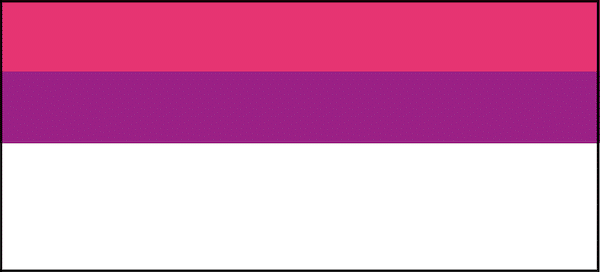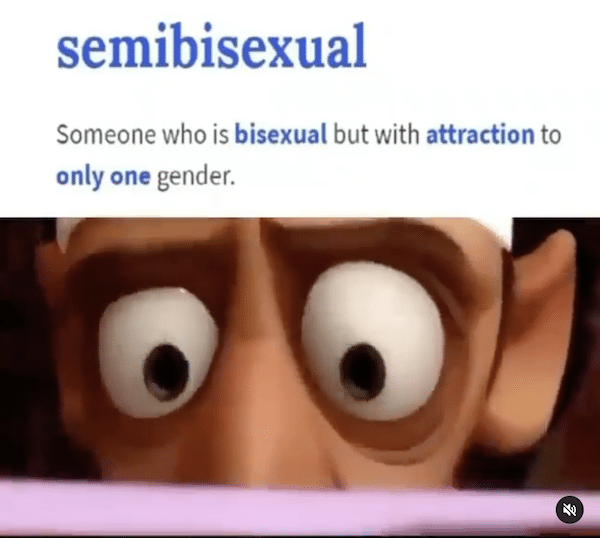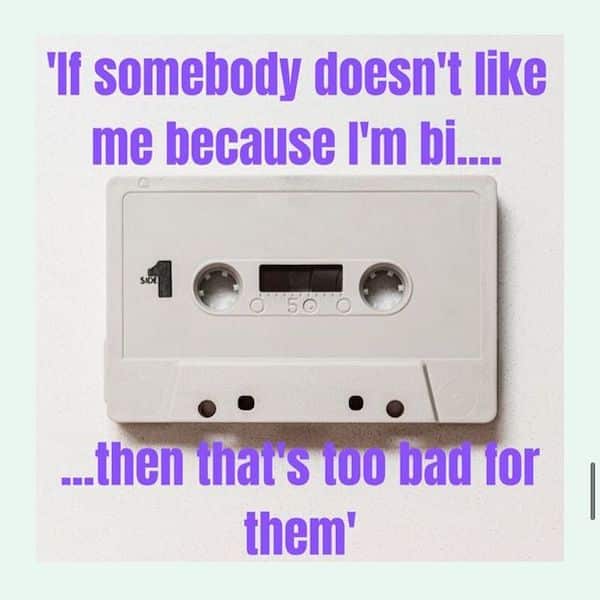Is Being Semibisexual A Joke, Or Is It Real?
Social media users have been scratching their heads over the term “semibisexual”. Because the definition of semibisexual is contradictory, many have wondered whether this new word is “real” or not.
If you’ve come across the term “semibisexual” and are confused about its definition, here is everything you need to know.
Related | What Is The Bisexual Symbol?
What Does Semibisexual Mean?
Semibisexuality is a sexual orientation that describes someone who is attracted to only one gender (typically the opposite) but still identifies as bisexual.
In other definitions, someone who is semibisexual can feel sexual attraction towards two genders but feel romantically linked only to one. In this case, semibisexuality might fall under the split attraction model, which states that romantic and sexual attraction are completely different experiences.
According to Urban Dictionary, semibisexual people “like 75% the other gender and 25% their own”. The term “semibisexual” originated on social media in 2018 and first made its way onto Reddit in 2019.
Is There A Semibisexual Flag?
The semibisexual flag is red, purple, and white. It mimics the bisexual flag but replaces the blue stripe with white. The creator of the semibisexual flag is unknown, and there is no published explanation behind the chosen colors.

The Semibisexual Meme, Explained
Because of its confusing and contradictory definition, many people have turned semibisexuality into a meme on social media. Many consider the term a joke, meme-ifying it to mean “lol, I’m straight, but I wanna be special.”
Controversy Over Semibisexuality
The concept of being semibisexual has sparked a lot of controversies. Those who use it have been pegged as “attention seekers”, co-opting queerness while remaining straight (or straight-passing).
Some people from the bisexual community consider the term to be demoralizing and bigoted. Semibisexuality may contribute to bi-erasure because it assumes that bisexuals experience equal attraction towards two or more genders. In reality, bisexuals may experience attraction in different degrees – it’s not always 50/50.
That said, it is perfectly valid to be primarily heterosexual while occasionally being attracted to someone of the same gender – this is called “heteroflexibility”.
Heteroflexible vs Bisexual
Some describe the experience of being semibisexual as similar to that of being heteroflexible. Roughly 15% of Americans identify as heteroflexible, though each person’s experience might vary.
Heteroflexibility sometimes fits into the definition of bisexuality, but this isn’t the case for everyone. For example, someone might prefer to call themselves heteroflexible instead of bisexual because:
- They feel more heterosexual than homosexual.
- They don’t feel confident using the term bisexual.
- They are still unsure about their sexual preferences.
How To Know If You’re Heteroflexible Or Bisexual
If you somewhat relate to the term “semibisexual,” you might wonder whether you are heteroflexible or bisexual. Here are a few ways to find out what term suits you best.
Ask Yourself Questions
Being honest and asking yourself the following questions can help you determine whether you are bisexual or heteroflexible:
- Who am I most attracted to?
- Do I feel romantically attracted only to the opposite gender but don’t mind exploring the same gender sexually?
- Do I feel like I’m missing out on romantic or sexual experiences with the same gender?
- Am I more comfortable using the term “heteroflexible” or “bisexual”?
Use The Kinsey Scale
While there is no test to tell you if you are heteroflexible or bisexual, using the Kinsey Scale can put things into perspective. The Kinsey Scale, otherwise known as the Heterosexual-Homosexual Rating Scale, describes a person’s sexual orientation at any given time.
The Kinsey Scale ranges from 0 to 6, with 0 being exclusively heterosexual and 6 being exclusively homosexual. Many bisexual people score a 3, which describes “equally heterosexual and homosexual behavior or attraction”.
On the other hand, someone who is heteroflexible might score a 1 (predominantly heterosexual but with a slight inclination toward the opposite gender) or 2 (mostly heterosexual but with a moderate inclination toward the opposite gender).
When using the Kinsey Scale, it’s important to remember that this mechanism has its limitations – it doesn’t account for all sexualities (including pansexual) and works on binary principles. Still, it works as a very basic gauge for your sexual orientation.
How To Use LGBTQ Terms Responsibly
You can use many new terms to describe your gender identity and sexuality. That said, you should know when these terms are appropriate and how to use them properly. Here are a few tips to keep in mind:
Do Your Research
If you don’t know what a specific term means, you can refer to an LGBTQ glossary online. A few helpful glossaries include:
Glossary of Terms by the Human Rights Campaign
LGBTQ Glossary by John Hopkins University
LGBTQIA Resource Center Glossary by UC Davis
LGBTQ Terms and Definitions by the University of Florida
Ask Someone Within The Community
If you’re talking to someone and are unsure about how they identify, the best thing to do is ask them what terminology they use. Most of the time, they will feel valued and respected that you asked instead of assuming. You can also ask about their pronouns and specific experience of their gender identity or orientation.
Remember, you can never assume how a person identifies based on their appearance or speech. If you address someone the wrong way, own your mistakes by learning from them and being receptive to feedback.
Understand That Gender Identity And Sexual Orientation Can Change
Gender identity and sexuality are fluid, so don’t be surprised if someone who was once bisexual suddenly identifies as straight or gay (or vice versa). It’s important to remember that, just because someone identified as one way in the past and now identifies another way, it does not mean their former identity was invalid. Confusion is normal, and so is change!

@vanillacooldance/instagram.com
The Bottom Line
While the term “semibisexual” might accurately describe some people, it is often the subject of controversy and not widely accepted by the LGBTQ community. Ultimately, semibisexuality invalidates the bisexual experience by implying that bi people do not feel varying levels of attraction to different genders.
When using new LGBTQ-related terms, you should try to understand their context fully. Doing your research and talking to LGBTQ community members about specific terminology can prevent you from invalidating someone’s experience or misusing words. And if you’re unsure of how to address someone, the safest thing to do is ask!
RELATED | What Is the Questioning Flag?



